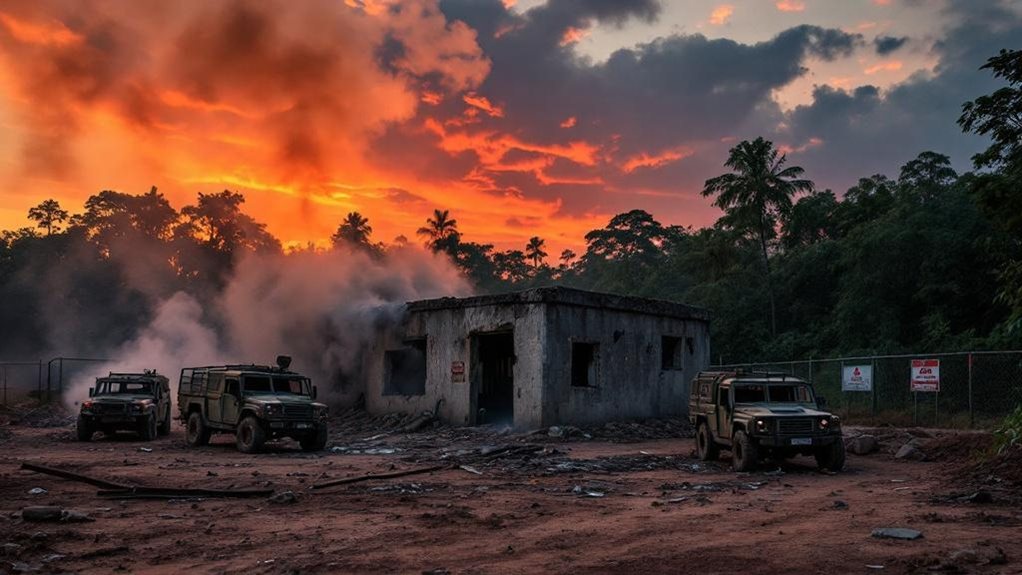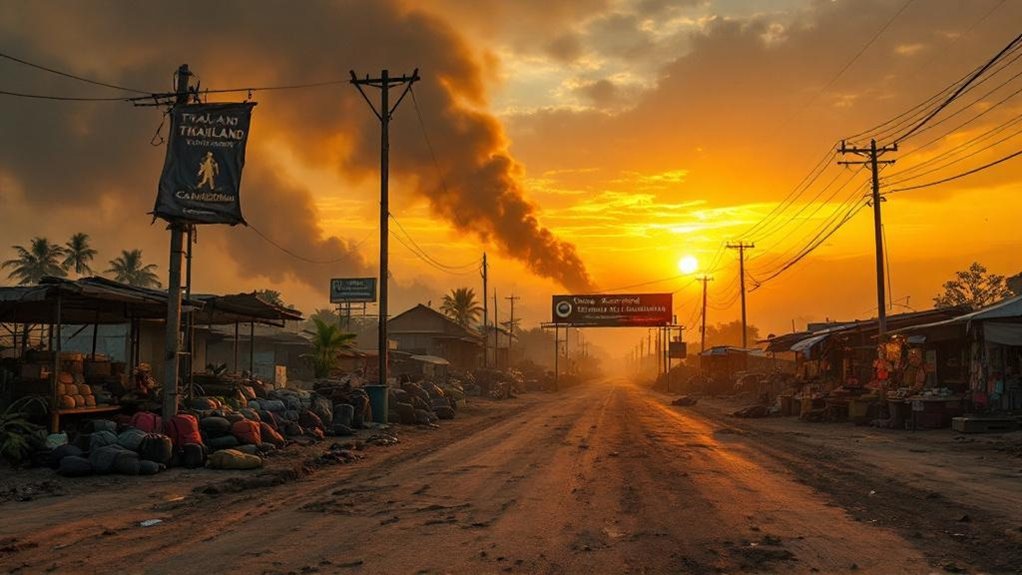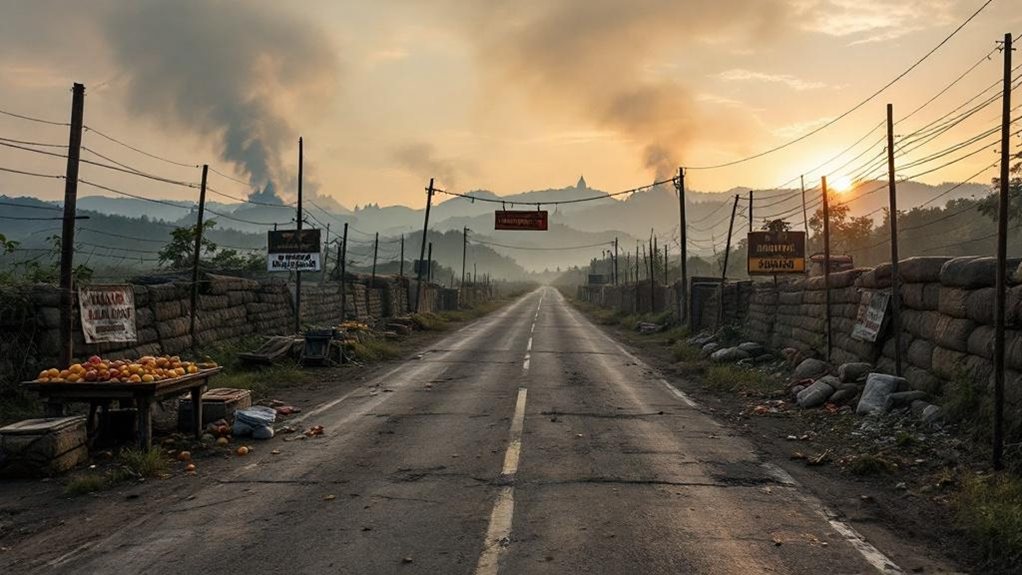Amidst continued military clashes in July 2025, over 20,000 individuals have returned to their homes in the contentious Thai-Cambodia border region. These areas have been a point of dispute since the historic 1907 Franco-Siamese Treaty, exacerbated by recent confrontations near the Preah Vihear Temple. The mass return of displaced individuals underscores the ongoing humanitarian crisis, with more than 130,000 still displaced. Escalated tensions and potential resolutions continue to shape the region’s complex narrative.
Although rooted in a historic territorial dispute traceable to the 1907 Franco-Siamese treaty, the recent conflict at the Thai-Cambodia border has escalated considerably, causing a humanitarian crisis. The longstanding enmity, particularly over the Preah Vihear Temple, has intensified nationalist sentiments in both nations. The International Court of Justice awarded the temple to Cambodia in 1962, but the surrounding border areas remain contested. Sporadic clashes have occurred since 2008, culminating in a significant skirmish on May 28, 2025, which escalated into full conflict by July 24, 2025.
The outbreak of violence has led to one of the largest mass displacements in recent years, with over 130,000 people fleeing the border areas. On a single day, reports indicated that 20,000 individuals returned to their homes, highlighting the fluid nature of the crisis. The Thai interior ministry reported that approximately 138,000 individuals had been evacuated from four border provinces by July 25. Many of these displaced persons have sought refuge in temporary shelters on the Thai side of the border, facing challenges such as disrupted livelihoods and humanitarian difficulties. The declaration of martial law by Thailand in seven districts of Chanthaburi and one district of Trat further underscores the severity of the situation.
The escalation of violence saw Thailand employing F-16 fighter jets for airstrikes against Cambodian positions, while Cambodia responded with Russian-made rocket attacks on Thai border towns, impacting civilian areas. Both sides continued to exchange artillery and small arms fire, and landmines in border areas have caused injuries, contributing to the ongoing hostilities. The military tensions preceding July focused on Cambodia’s reinforcement of border positions, perceived by Thailand as a provocative act. Satellite data analysis indicates significant military activity in the region, underscoring the scale of preparations by both nations.
Diplomatically, the situation remains tense. Thailand declared martial law in affected border provinces, and both countries recalled their ambassadors, downgrading diplomatic relations. The conflict drew international attention, with ASEAN chair Malaysia calling for an immediate ceasefire. Meanwhile, Cambodia’s Prime Minister accused Thailand of unprovoked attacks in a letter to the UN Security Council.
As of July 26, the conflict has resulted in at least 32 deaths, including soldiers and civilians, with extensive damage to infrastructure and homes. The humanitarian crisis continues, as displaced persons navigate the complexities of returning to areas still fraught with danger.









